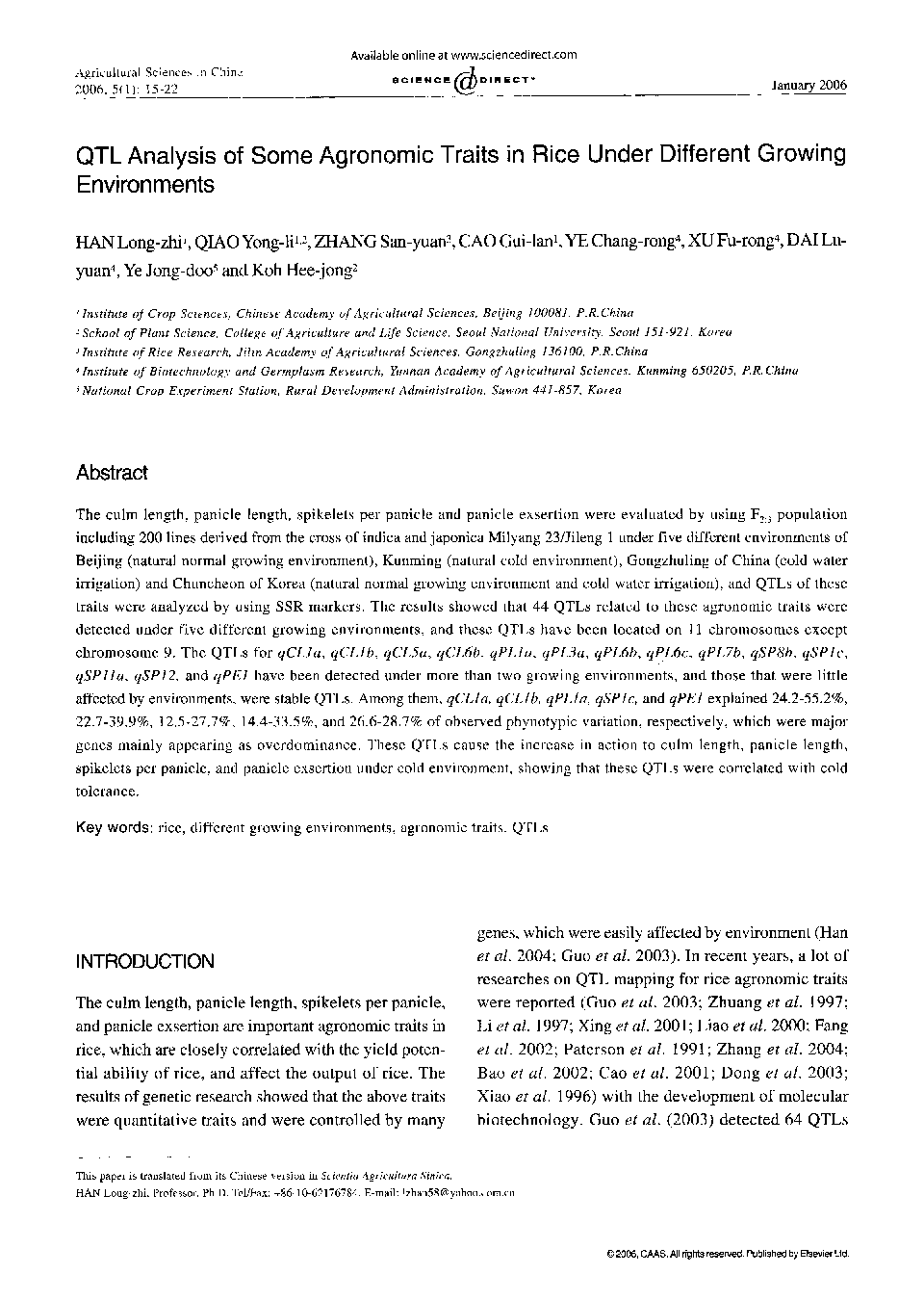| Article ID | Journal | Published Year | Pages | File Type |
|---|---|---|---|---|
| 4491076 | Agricultural Sciences in China | 2006 | 8 Pages |
The culm length, panicle length, spikelets per panicle and panicle exsertion were evaluated by using F2:3 population including 200 lines derived from the cross of indica and japonica Milyang 23/Jileng 1 under five different environments of Beijing (natural normal growing environment), Kunming (natural cold environment), Gongzhuling of China (cold water irrigation) and Chuncheon of Korea (natural normal growing environment and cold water irrigation), and QTLs of these traits were analyzed by using SSR markers. The results showed that 44 QTLs related to these agronomic traits were detected under five different growing environments, and these QTLs have been located on 11 chromosomes except chromosome 9. The QTLs for qCL1a, qCL1b, qCL5a, qCL6b, qPL1a, qPL3a, qPL6b, qPL6c, qPL7b, qSP8b, qSP1c, qSP11a, qSP12, and qPE1 have been detected under more than two growing environments, and those that were little affected by environments, were stable QTLs. Among them, qCL1a, qCL1b, qPL1a, qSP1c, and qPE1 explained 24.2–55.2%, 22.7–39.9%, 12.5–27.7%, 14.4–33.5%, and 26.6–28.7% of observed phynotypic variation, respectively, which were major genes mainly appearing as overdominance. These QTLs cause the increase in action to culm length, panicle length, spikelets per panicle, and panicle exsertion under cold environment, showing that these QTLs were correlated with cold tolerance.
